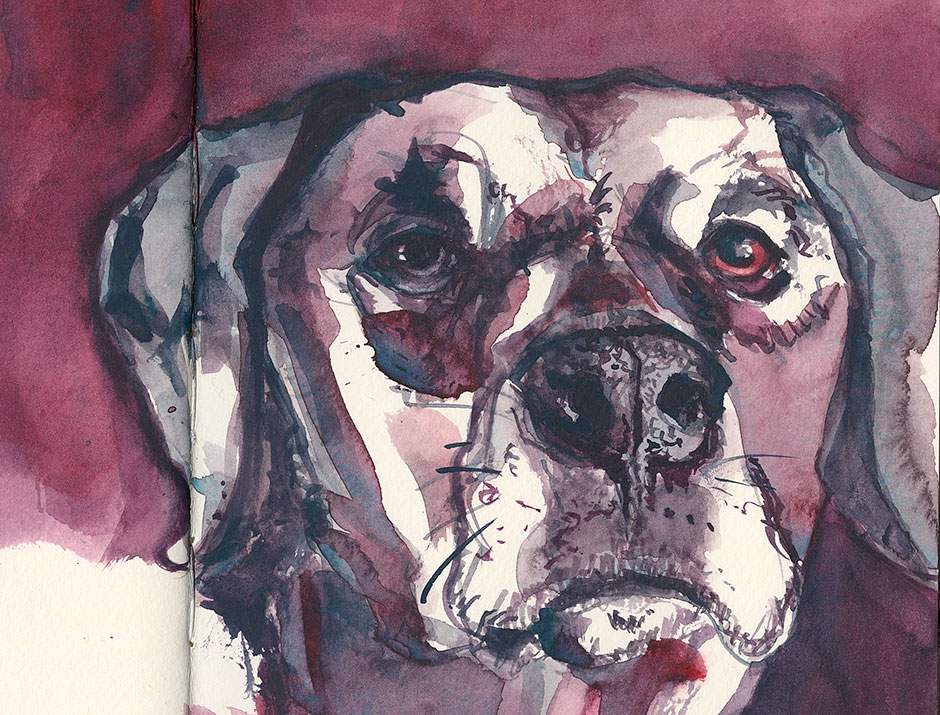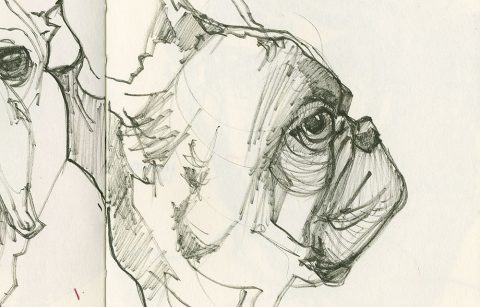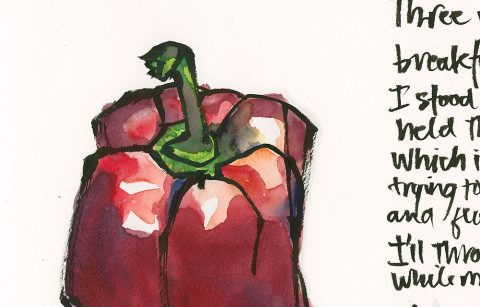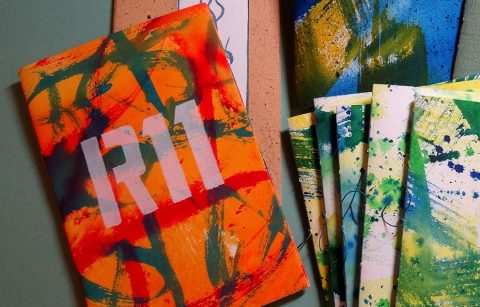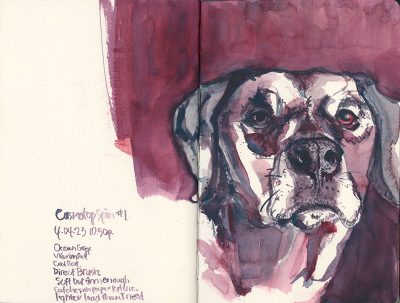 This is about sketch 4 or 5 in my series of testing liner brushes. I like this dog sketch (and it’s already on my Instagram page so I thought I’d round out the week with it).
This is about sketch 4 or 5 in my series of testing liner brushes. I like this dog sketch (and it’s already on my Instagram page so I thought I’d round out the week with it).
I’m still using Schmincke’s Ocean Grey with a warm and a cool red.
The difference here is that I’ve been through several brushes by this point working on this series; it’s late at night; and I didn’t have the patience to do the entire sketch with the liner brush. After putting in some broad strokes and some areas of color I had to shift the nose a bit, and then was lured by the ease of a larger brush. So I was still painting directly with a brush, but I was looking to lay in a lot of color fast so I could go to bed. (It’s rare that I lose patience when I’m sketching, but it has been beyond weird here, that’s all I’ll say.)
The Cosmotop Spin #1 Rigger
I’ve been a fan of the DaVinci Comotop Spin since the 1990s when Darin Rinne , then the manager, and now co-owner, of Wet Paint in St. Paul recommended it to me. I was looking for a good watercolor brush for students taking my color theory class at Como. I wanted a resilient brush, a hearty brush, and a brush that wouldn’t break the bank. I always recommend my students do their initial color testing with synthetic brushes because the testing/swatching process can be difficult on a brush. It will be easy enough to switch to expensive samples when they have the color aspects worked out.
On that day, consulting with Darin I looked at him and blabbed about what I wanted, and he smiled, like he does, and waited, like he does, and then went off to get a brush and one of those testing papers. I was sold pretty much on the first stroke of the brush.
I’m pleased to say that the rigger brush they sell has the same great qualities of their rounds. It is springy with enough push-back for me.
The drawbacks to it: it catches a little on the cold press texture of the paper—but I can work around that with a bit more care. Sometimes that’s the price you pay for snappiness.
It doesn’t carry as much paint as some of the other riggers/liners I tested, so that can be disruptive to how you work—only testing will tell you if it fits your work style for paint load.
It is softer than some of the other brushes I tested. But not so soft that it lost spring. That will be a huge plus for many users.
I didn’t get as fine a line out of it as I do from some of my other riggers/liners. I don’t worry about that. In all brushes, but especially in riggers/liners the numbering/sizing/labeling is idiosyncratic at best. The most you know from the label is that within a given LINE of brushes from a certain company the smaller the number the smaller the brush.
That’s it. Everything else, all bets are off. And a 1 from one line is maybe a 3 in another line. And don’t get me started about double aughts.
I think the best thing you can do, if you’re in the market for a rigger/liner is to get an idea of what you might be looking for in a brush (which is what I’m trying to point out to you in these posts) and then go some where they will let you test a brush’s action with water. Then decide on one or two to buy and test drive them at home. Repeat.
You may find your true love on the first date, but I think it’s going to take a few more tries.
More will follow in future posts.



















